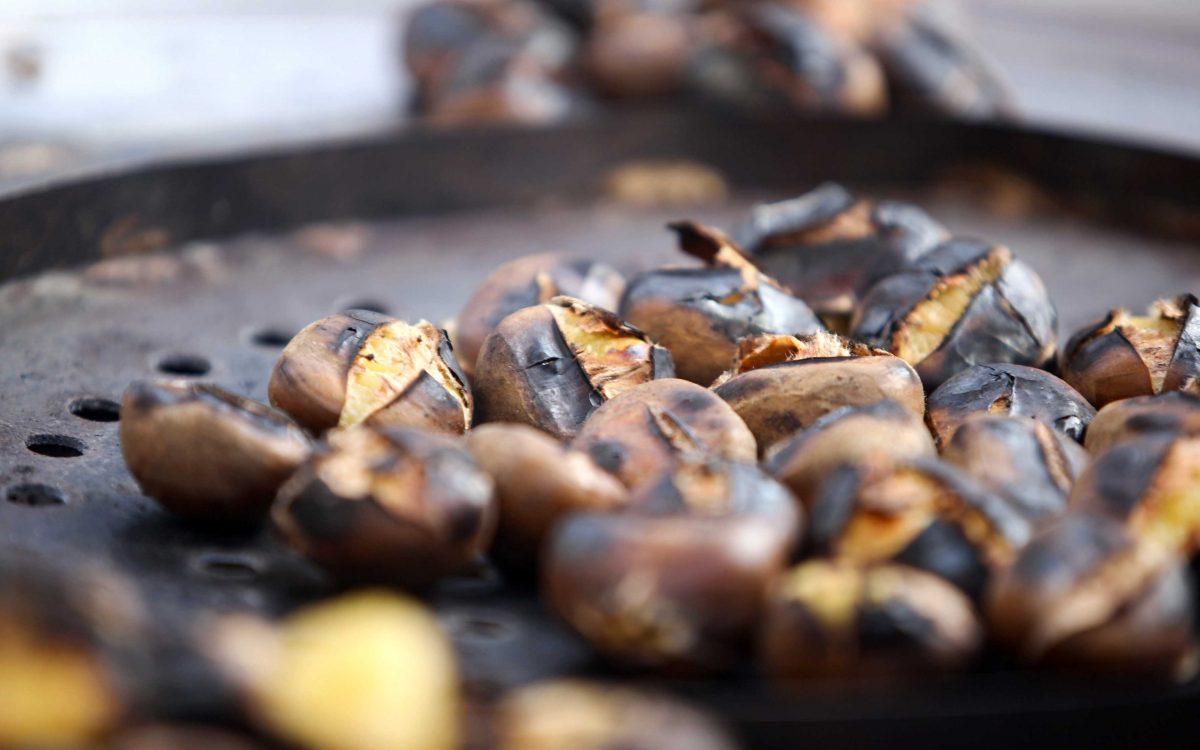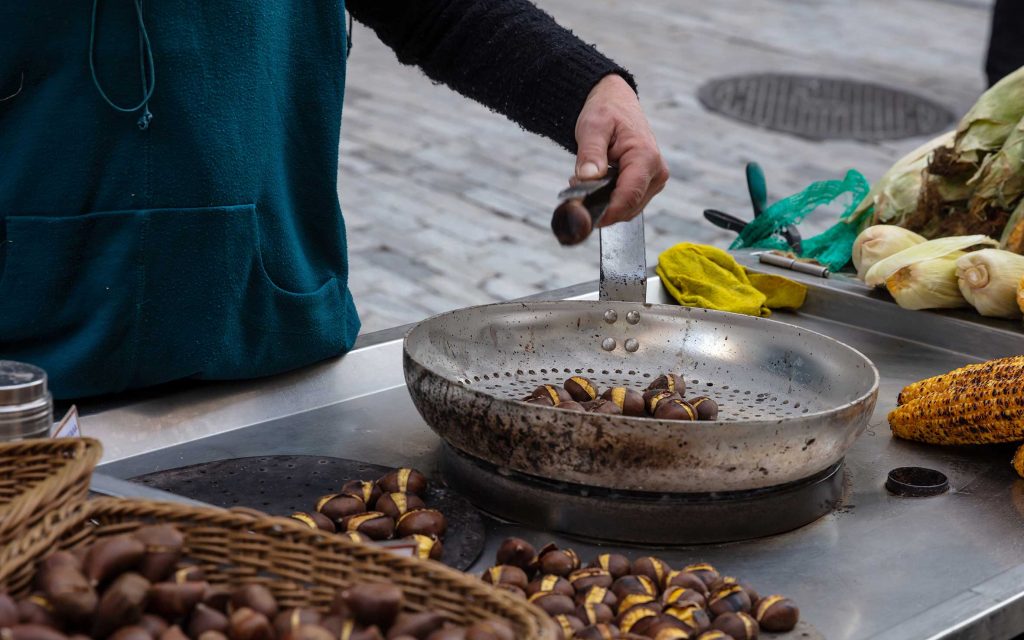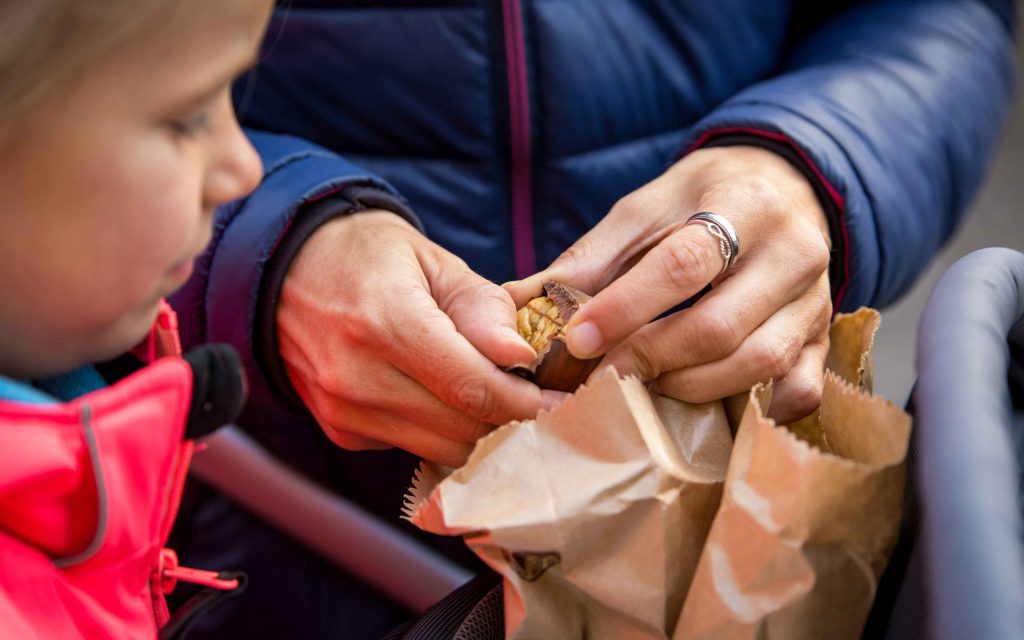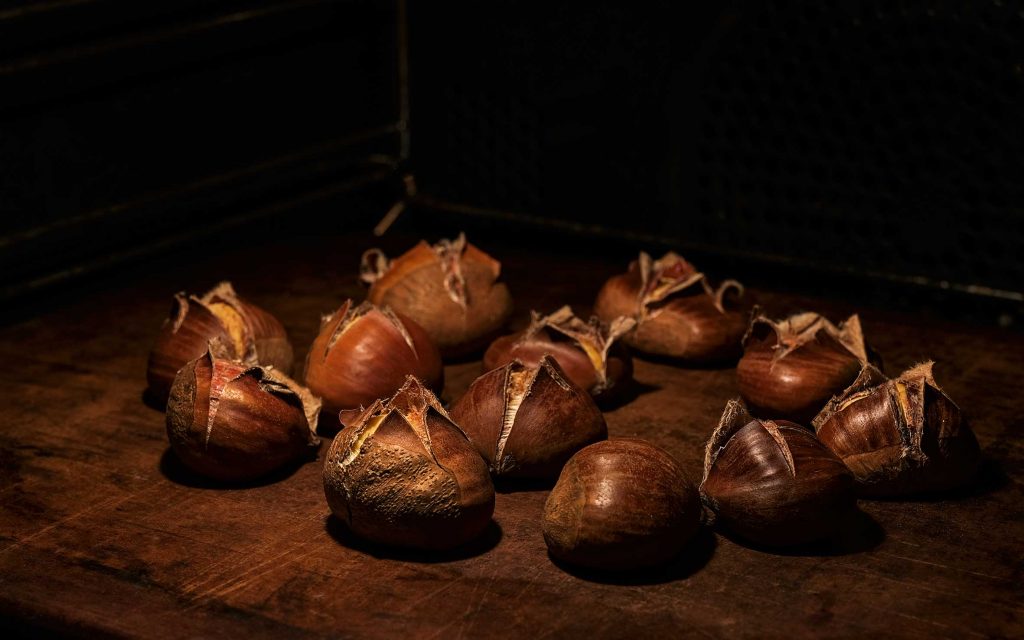Chestnut Recipe that Makes it Feel Like Christmas in Greece


The first truly cold days in a Greek city can put you in a bit of a gloomy mood. Walking around the streets under grey skies, island beaches a figurative million miles away, the weekday seems a drag until… a smell suddenly tickles your nose, and year heart. Warm and sweet, it smells like a crackling fire and a treat all at once, and it’s the first sign of Christmas. There’s a street vendor ahead, and he’s roasting chestnuts.


First, you enjoy them as a heat source, cupping your hands around the paper cone delivered to you by the kastanas (the vendor, from the word kastano, meaning chestnut), who cooks them to order on the grill in his portable stall. Then you peel one – too soon, and burn your fingers. The next one goes better. The charred, flaky shell breaks off to reveal the soft, mealy flesh. And what could be a better snack? Warm and sweet, festive and cheap, gluten-, sugar- and dairy free, vegan and Lenten (for those who partake in the nativity fast), the kastanades should, by some logical reasoning, all be millionaires. In reality, however, rather than seen as a delicacy or a trendy superfood, chestnuts are an everyman’s treat – once a staple food which kept poor generations in mountainous areas alive over centuries, if not millennia.


Roasted Chestnuts
While roasted chestnuts are popular in many places around the world throughout the winter, there is something about the smell when the vendors toss them on the grill that makes us think of home, and of Christmas. To make your home smell like Greek holidays, you can easily roast some in your own oven. Here’s how:
METHOD
Cut a large cross through the shell (but not the flesh) of each nut.
Place them cut side up in an oven-proof pan, along with two tablespoons of water. Roast for about half an hour in a preheated, 200°C oven.
Remove from the oven, cover the pan (trapping steam inside will make the chestnuts easier to peel), and let cool for a bit.
Peel and enjoy.
Source: greece-is.com






